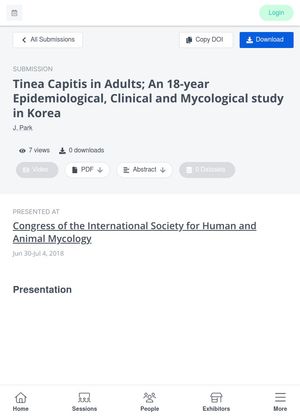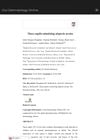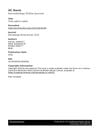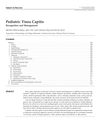Tinea Capitis in Adults: An 18-Year Epidemiological, Clinical, and Mycological Study in Korea
May 2018

TLDR Tinea capitis in adults often leads to misdiagnosis or delayed diagnosis due to atypical symptoms, requiring careful examination for proper treatment.
The study, conducted from June 2000 to June 2017, retrospectively evaluated 82 adults among 185 patients with tinea capitis, a dermatophyte infection of the scalp hair. The mean age of patients was 66.9 years, with a female predominance. The average duration from disease onset to mycological diagnosis was 22.5 weeks, and the misdiagnosis rate through only clinical examination was 65.9%. Most patients had an underlying chronic systemic illness (74.4%). The most common clinical subtype was diffuse pustular (26.8%), and 56.1% of patients showed localized or diffuse alopecia. Microsporum canis was the most common causative organism. Treatment with systemic and/or topical antifungal agents, oral corticosteroid, and antifungal shampoo led to complete resolution in 93.9% of patients, but 9.1% showed recurrence. The study concluded that the atypical presentation of tinea capitis in adults may lead to misdiagnosis or delayed diagnosis, emphasizing the need for a high index of suspicion and mycological examination in adults with inflammatory scalp conditions.


